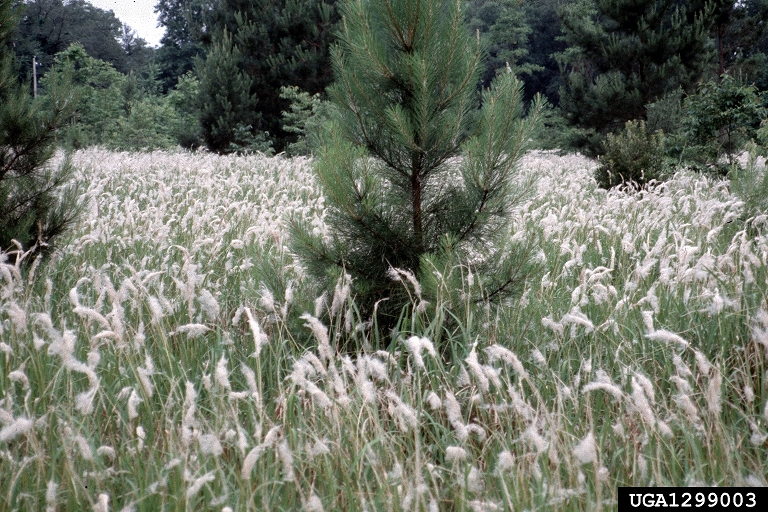
by Mary Salinas | Oct 14, 2015
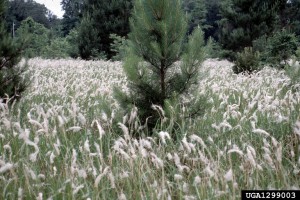
Cogongrass dominating the landscape. Photo credit: Charles T. Bryson, USDA Agricultural Research Service, Bugwood.org.
A U.S. Forest Service grant is again available to assist non-industrial private landowners with the cost of controlling cogongrass. Applications will be accepted starting October 15, 2015. The program reimburses landowners for 50% of the cost for two consecutive years with a maximum reimbursement of $10,000 for each year.
Cogongrass is one of the worst invasive plant species in Northwest Florida as it marches through natural areas and literally chokes out our desirable native vegetation as it goes. The underground rhizomes continually expand patches of the grass in every direction and its prolific seed production carries infestations to new areas.
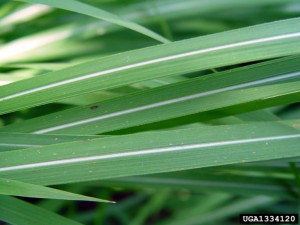
Note the off center midrib along the leaf blade. Photo credit: Chris Evans, Illinois Wildlife Action Plan, Bugwood.org.
There are several ways to accurately identify cogongrass. The leaf blades are flat with serrated edges and tend to be yellowish-green in color. The midrib which runs lengthwise up each leaf blade is white and is distinctly off-center. The seed head which arises in the spring is a fluffy white plume. Since it spreads through rhizomes, cogongrass is often seen in expanding circular patches.
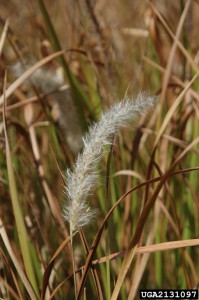
The fluffy white plume of the seedhead. Photo credit: Chris Evans, Illinois Wildlife Action Plan, Bugwood.org.
If you need assistance with the identification of cogongrass, please consult your local Extension office.
For more information:
Cogongrass Treatment Cost-Share Program
Cogongrass (Imperata cylindrica) Biology, Ecology, and Management in Florida Grazing Lands
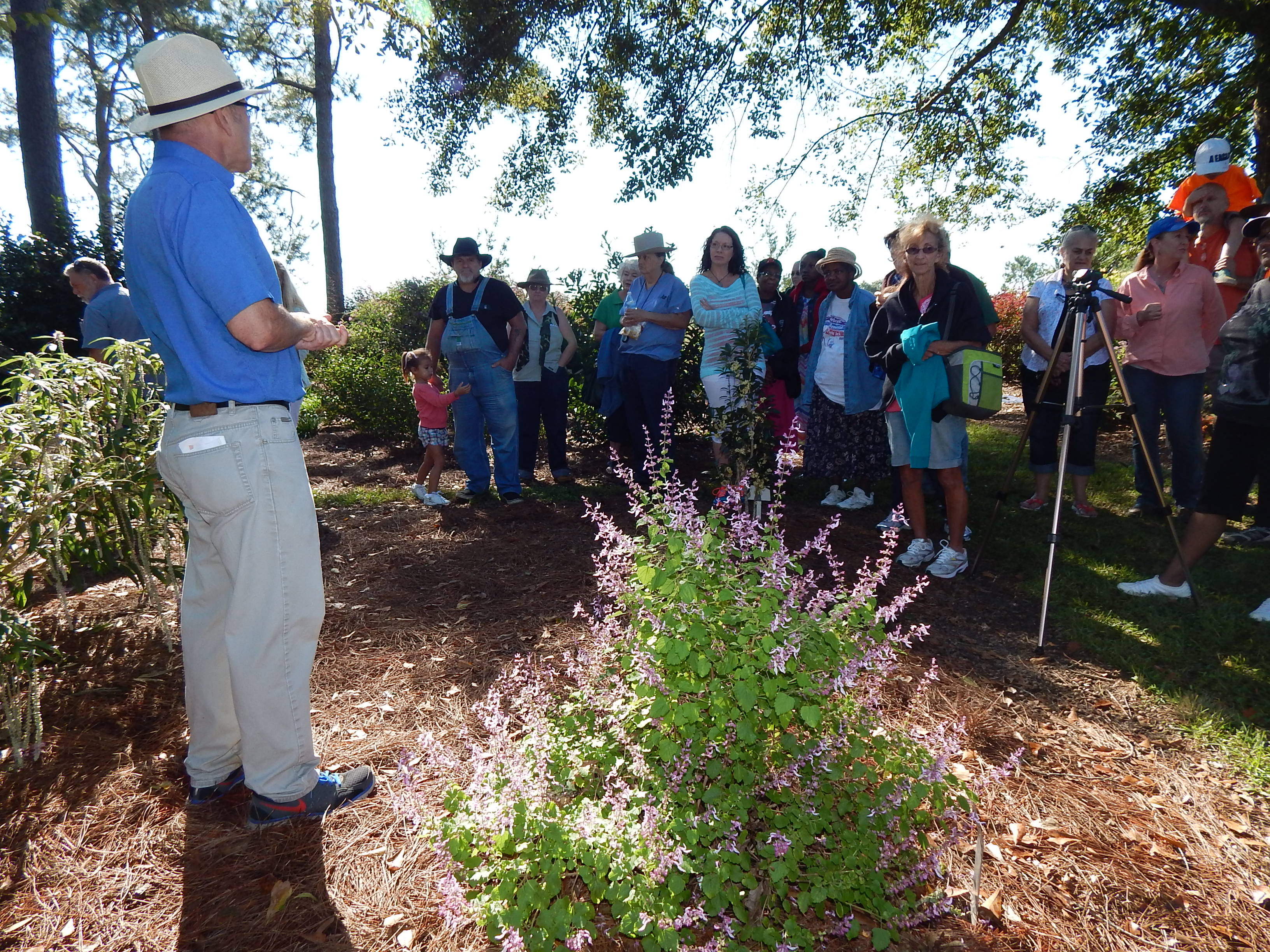
by Gary Knox | Sep 28, 2015
The University of Florida/IFAS presents Art & Garden Fall Family Festival, October 3, at the North Florida Research and Education Center (NFREC), Quincy Campus. Join us that day and discover creative ways to explore visual art and the art of gardening through demonstrations and fun activities for the whole family. Speak with experts about all your gardening questions or purchase unusual, hard-to-find, top-performing plants for our area. Take a tour of the Gardens or a trolley ride highlighting fruits and nuts that can be grown in our area. Locally grown produce and garden plants as well as arts and crafts will be for sale along with food and refreshments. Children’s arts and crafts activities will take place in a huge “Kid Zone” located in a shaded, garden area.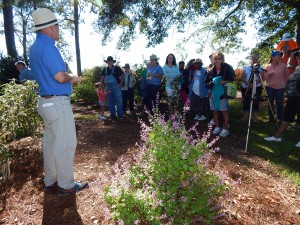
The Art & Garden Fall Festival is free and open to the public from 9 a.m. to 2 p.m. on Saturday, October 3.
The festival takes place in Gardens of the Big Bend, located in Quincy at I-10 Exit 181, just 1/8 mile north on Pat Thomas Highway (SR 267). The Gardens are located on the campus of University of Florida/IFAS, North Florida Research and Education Center, off Pat Thomas Parkway, SR 267 at 155 Research Road, Quincy, FL. Located just north of I-10 Exit 181, 3 miles south of Quincy.
Presented by the University of Florida/IFAS, North Florida Research and Education Center in collaboration with the Gadsden Arts Center, Gardening Friends of the Big Bend, the Quincy Garden Club and other area garden and arts organizations.
For more information: http://nfrec.ifas.ufl.edu/art-and-garden/ or 850-875-7100.
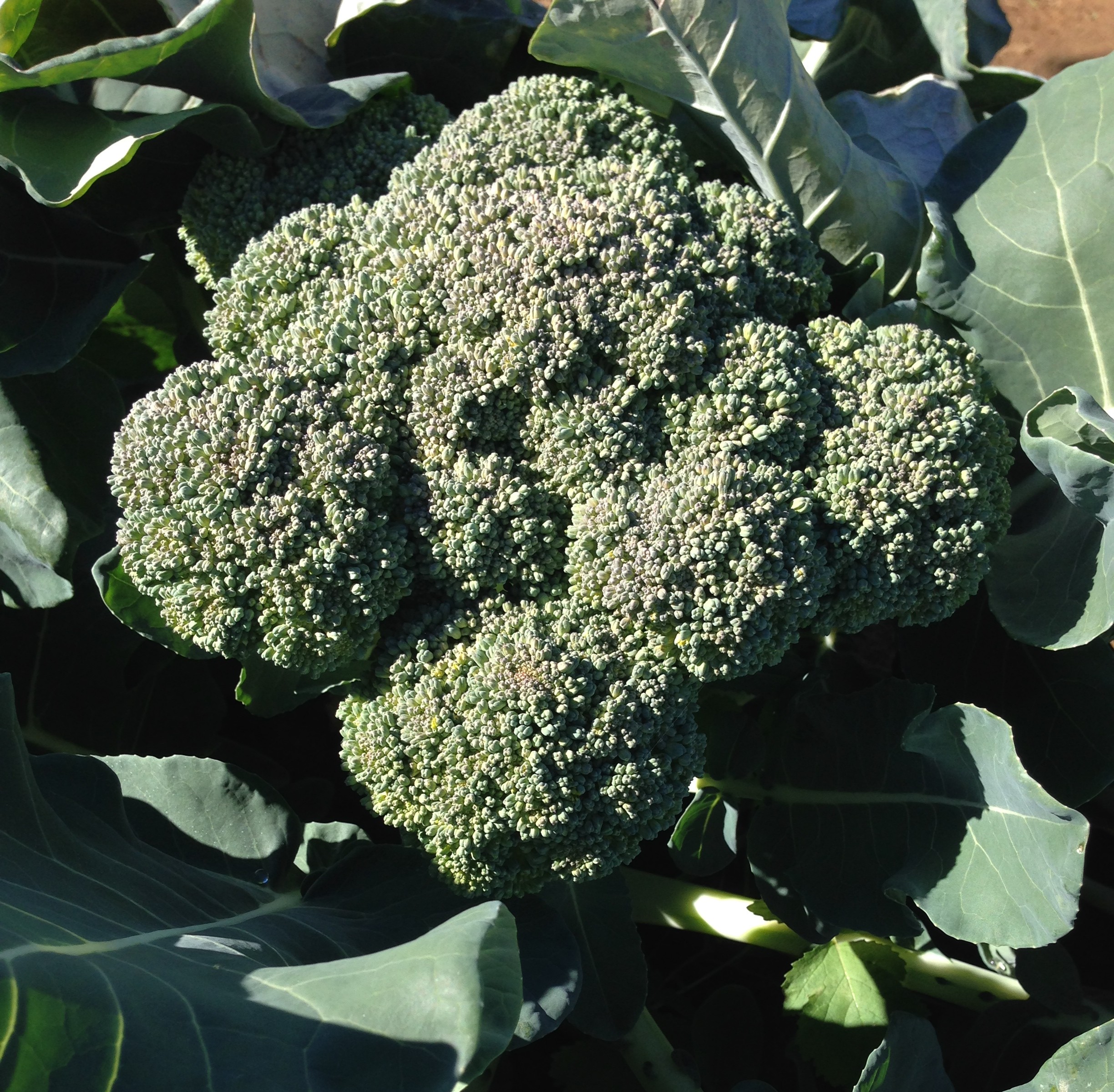
by Julie McConnell | Sep 3, 2015
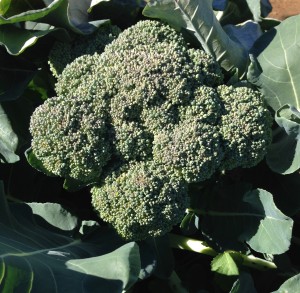
Broccoli, a popular winter vegetable. Photo by Mary Derrick, UF IFAS
As the days get shorter and temperatures decrease, it is time install your cool season vegetable garden. Many vegetables can be grown in Florida, but it is important to understand what the climatic requirements are for each crop to have the most success.
To get the most of your garden space know the recommended months for planting and the turnaround time for harvest so that you can stagger plantings or change out crops as needed.
September is the ideal time to plant cabbage, beets, kale, lettuce, mustard greens, onions, and radishes. After the New Year some options include eggplant, potatoes, English peas, and turnips.
Many gardeners start their tomatoes and peppers as early as February, but they are frost sensitive and early planting carries some risk of cold damage.
If you are interested in learning more about fall vegetable gardening, join the UF/IFAS Bay County Master Gardeners on Friday, September 18th for a free vegetable gardening workshop. This class will be held at the Bay County Extension Office at 2728 E. 14th Street in Panama City. To register please call 850-784-6105 or email bay@ifas.ufl.edu. Fall-VegMG2015
For more information and a full chart of what to plant when see Florida Vegetable Gardening Guide.
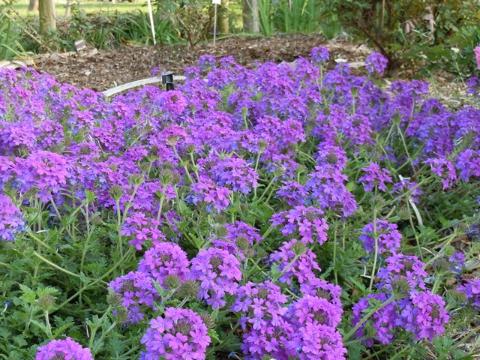
by Larry Williams | Mar 13, 2015
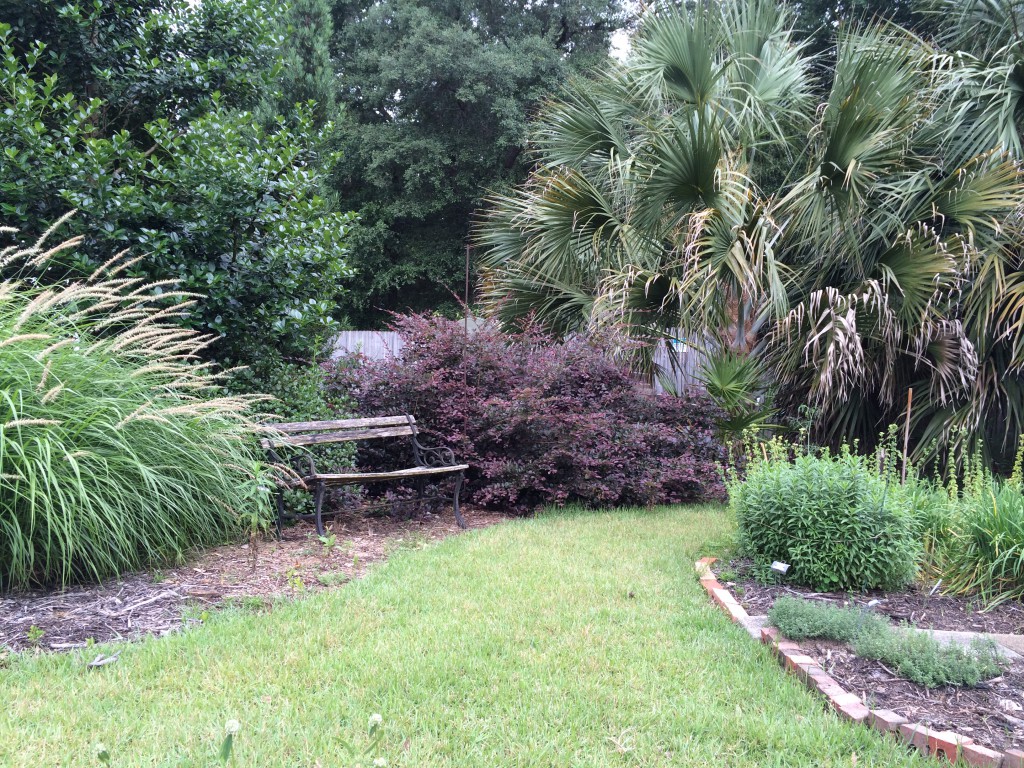
Photo by Mary Derrick, UF IFAS
Upcoming lawn & garden seminars
With spring on its way, your local University of Florida Extension Office in Okaloosa County is providing lawn and garden seminars for the public.
Plan Before You Plant Seminar: Take the guesswork out of vegetable gardening and join Okaloosa County Master Gardener Lee Vanderpool as he presents this seminar on planning your vegetable garden. Topics covered will include creating a plan for planting, interplanting and companion planting, planning for raised beds and container gardening. This is the first of our monthly seminars scheduled for the 3rd Wednesday of each month now through October. This first seminar will be held Wednesday, March 18 from10 to 11 a.m. at the Extension Annex located at 127 Hollywood Boulevard in Fort Walton Beach. For more information and to register, please call the Okaloosa County Extension Office at 850-689-5850. Space is limited.
Controlling Tomato Pests in the Home Garden Seminar: If you plan to grow tomatoes this year, plan to attend this seminar. Learn how to identify and control many of the insect and disease pests associated with growing tomatoes in the Florida home garden. I will provide this seminar on Thursday, April 2 from 9 a.m. to noon at the Okaloosa County Extension Office, 3098 Airport Road in Crestview. Please register for this program by calling the Okaloosa County Extension Office at 850-689-5850. Space is limited.
Lawn Care in Northwest Florida Seminar: I will provide this seminar as a First Tuesday Series program at the Crestview Public Library on Tuesday, April 7.
Many people become frustrated with their lawns here in Florida. Our climate, sandy soils and pest problems are unique compared to most areas of the U.S. Most people follow incorrect lawn care practices in Florida. As a result, they waste money, water, fertilizer and end up with a disappointing lawn.
This program begins at 10:30 a.m. with coffee and cookies served starting at 10 a.m. at the Crestview Public Library. The library is located at 1445 Commerce Drive (behind the Post Office). Call the library at 682-4432 or the Okaloosa County Extension Office at 689-5850 for more information.
There is no cost to attend these seminars but space is limited. So please preregister. Larry Williams, UF/IFAS Extension Agent, Okaloosa County, March 12, 2015
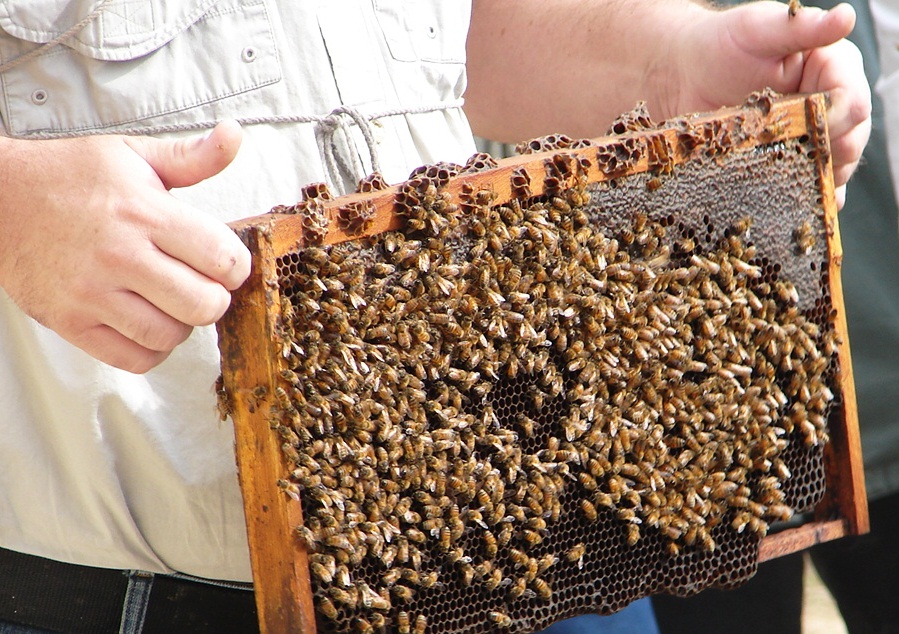
by Matthew Orwat | Feb 13, 2015
UF/IFAS Extension
2015 Beekeeping in the Panhandle Short Course
March 9th

The UF/IFAS Extension Panhandle Agriculture Team is pleased to once again offer a Beekeeping Short-Course in March, 2015. These classes will be offered via interactive video at Extension Offices across the Panhandle. Please call your local UF/IFAS Extension Service (listed below) to register.
Classes will be taught by Dr. Jamie Ellis and other state and nationally recognized experts from the University of Florida Honey Bee Research and Extension Lab and the Florida Department of Agriculture & Consumer Services Bureau of Plant and Apiary Inspection.
Classes are Monday evenings from 6-8 pm Central Time, 7-9 pm Eastern Time, with a Saturday morning bee-yard field day 9-12 am! Each presentation will be followed by an interactive question & answer period.
March 9: Honey Bee Biology, Anatomy, & Hive Structure
March 16: Bee Nutrition and Bee Botany (Identification of Nectar Plants)
March 21: Bee-Yard Field-Day – A hands on learning opportunity!
March 23: Important Pest and Diseases – Identification and Management
Registration for all four classes is $20 per person, or $30 for a family. This fee covers course materials and refreshments.
Please contact your local UF/IFAS Extension Service (see list below) to register:
- Bay County 850-784-6105
- Calhoun County 850-674-8323
- Escambia County 850-475-5230
- Franklin County 850-653-9337
- Gadsden County 850-875-7255
- Gulf County 850-639-3200
- Holmes County 850-547-1108
- Jackson County 850-482-9620
- Jefferson County 850-342-0187
- Leon County 850-606-5202
- Liberty County 850-643-2229
- Okaloosa County 850-689-5850
- Santa Rosa County 850-623-3868
- Wakulla County 850-926-3931
- Walton County 850-892-8172
- Washington County 850-638-6180
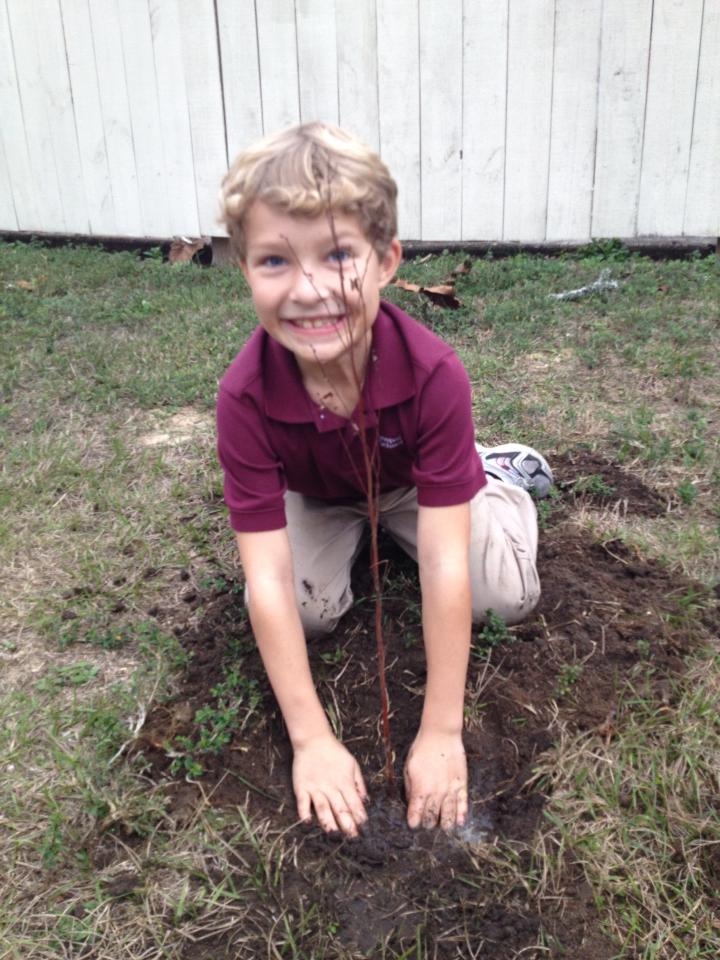
by Carrie Stevenson | Jan 13, 2015
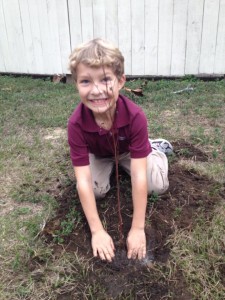
Planting a tree is an excellent way to insure clean air and water in the future. Photo credit: Carrie Stevenson
Most of us begin a new year with resolutions–to exercise more, to eat right, to spend our time more productively–but few things have as many lasting impacts for the future as the simple act of planting a tree.
Arbor Day (which literally means, “Tree Day”) was founded in 1872 by J. Sterling Morton, a naturalist and journalist in Nebraska. By 1882, it was celebrated by thousands of schoolchildren nationwide, who planted trees and took care of them with their classmates. Today, millions of communities and schools celebrate Arbor Day all over the world. Trees provide endless benefits, including shade, recreation, food and building products, shade and wind protection, wildlife habitat, oxygen production and carbon dioxide uptake.
Arbor Day is typically celebrated in the United States on the last Friday of April, but as ideal tree-planting conditions differ by climate, each state has its own specific Arbor Day, as well. Winter is the ideal time to plant trees in Florida, because it allows roots to develop without expending energy on growing new leaves and shoots. Our state celebration this year is January 16th.
Many local communities in Florida hold special events around this time. Be sure to check with your local Extension office or Native Plant Society chapter to find out if they are offering free trees or public events this month. For more information on the best trees for your area, be sure to take the time to read “Native Trees for North Florida” or peruse the UF Environmental Horticulture web page.













